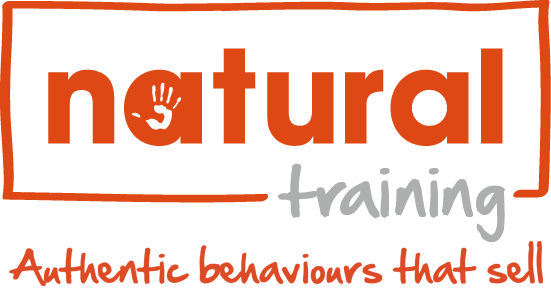Negotiation Skills Every Salesperson Needs
If you are in sales, negotiating is a part of your daily life. In some instances when the sales conversations have gone extremely well, they are simply a matter of finalising terms, of dotting a couple of i’s and crossing the t’s.
However, they don’t always run so smoothly, as a prospect may want to hammer you down on price or secure a raft of concessions.
Negotiation is a tactic that not everyone is comfortable with. Given a choice of root canal work without anaesthetic or attempting to close a deal, some would opt for dental surgery every time.
In this article we share some tips for improving your chances of walking away with your desired results – even if you are really uncomfortable with negotiating…

Sales negotiation skills
Here are our top tips on how you can protect your prices and walk away with a win-win:
1. Be prepared
Preparation is everything. Never enter negotiations without being fully briefed. Gather as much relavent information as possible. This means understanding your prospect’s situation and how your offering will solve their problems. It also means being clear on ever concession you may make or how every counter proposal will affect your bottom line. The more information you have, the stronger you will be.
2. Pursue a win-win outcome
“The only win is a win-win”. Negotiation is the art of compromise and it is rare that we walk away with the perfect deal. While some advocate a hard-nosed, “win-lose” approach, a win-win style is often more successful.
One of the dangers of trying to get everything you can at the expense of another party is the long-term impact of your actions. When further negotiations take place, the other party may take your lead and adopt a harder position.
In Negotiation Boot Camp: How to Resolve Conflict, Satisfy Customers, and Make Better Deals, leading negotiation expert Ed Brodow states that he always looks for a win-win scenario. He believes that the anxieties and fear that accompanies some transactions melt away when the objective is not to win at all costs, but to help each other. Such collaboration can also lead to mutually beneficial long-term relationships.
Close your eyes and imagine you are playing tennis when you negotiate. Did you imagine that you were playing singles against your customers? Or were you in the same doubles team playing against their competition? The latter is clearly the most beneficial analogy when it comes to negotiation. Using collaborative language such as “Let’s find a solution to this”, “we”, and “our” really helps.
3. At difficult moments, let the prospect talk first
With the adrenalin pumping through your veins the temptation can be to jump in and start making concessions to seal the deal. However, let your prospect get the conversational ball rolling.
Explore their hesitations with great probing to get to the bottom of not just the content of what they are saying, but the emotion driving it. This is the key to active listening, which is to leave nothing on the table, confront the truth, and achieve better clarity as a result.
4. Expand the conversation beyond price
If the sticking point is money, don’t rush in and start offering lots of discounts. Price is tied to value and perhaps you haven’t done enough to explain the value of your products or services. Try this: Instead of simply telling your prospects about the value they get from the deal, ask them to talk through their perceived value of having their problem solved.
A deal is stronger if you can firstly find out where they are at with value, giving you the chance to ‘double down’ on their perception, while finetuning any areas that they cannot see clearly. You also might like to throw in any final “low cost / high value” sweeteners to the deal.
5. Enjoy the silence
This can be one of the most powerful tools in your negotiation toolbox. Whether you are confronted with a tough decision or a sweet deal that makes you want to swing off the chandelier, master the art of the blank-faced, but thoughtful stare.
Many people rush to fill conversational voids with unnecessary chatter because they fear silence. But silence can be your best friend. Let others do the talking to give you time to think, plan your move and respond.
6. Ensure you have a best alternative
A BATNA refers to the “Best Alternative to a Negotiated Agreement”. What this means is having an alternative will give you strength during negotiations. If the other person looks like they’re going to walk, consider having your BATNA ready, along with ways of sweetening the deal to get the conversations back on track.
Always have a few concessions in mind that do not compromise on what you want to get out of the negotiation. They should be factors the other party wants to receive, not that you want to give up.
It’s about adding value. You will have low-cost, yet high-value sweeteners to offer, and this helps if you have a good relationship with the other party. For example, try connecting the buyer to a couple of useful contacts on LinkedIn. This costs you nothing, but adds thought and depth to the relationship. There also might be some value to you in having them make a video testimonial post-purchase. If they agree to that, then you might take a little off the price, knowing that a great testimonial video can attract another 10 customers at the price you want.
7. Negotiation body language
Negotiating is not just about the words you say, it’s your entire body language. The way you stand, your gesturing – all this points to your confidence.
Try and keep your hands away from your face as much as possible, as even subtle hand movements towards the mouth can erode confidence they have in you. Psychologists have proven that we humans are much more likely to make a buying decision with “two feet on the ground”. If you adopt this pose, then the other party may too, meaning that they are in a better position to decide.
6 Bonus Negotiation Tips
1.The rule of ‘you, then me’
Or “I’ll do this if you do that” (conditional requests). Don’t give something away without getting something back.
2. Target the “position”, not the “person”
Keeping a calm, logical head and staying within the context of the negotiation is critical, so try and quell your emotional feelings about how they are behaving towards you.
3. It’s rarely just about the money
It’s about how you make people feel. Buyers like to feel clear, comfortable, secure, proud, and brave. Create a climate where they are able to feel the way you want them to feel.
4. Don’t hurry
We know that you are under pressure to perform, but hurrying through a negotiation can leave money on the table. Take a deep breath, recognise the pressure that they other party is under too, and calmy navigate your way through the negotiation.
5. The rule of pain and gain
Add muscle to your negotiation by outlining both the gain of choosing your solution, and the pain of not choosing it. Either are strong, but together they make a winning combination.
6. Don’t do it alone
Always have someone else to defer to, even if that ‘person’ is your goldfish. “Good Cop, Bad Cop” is a valid negotiation technique where you can play the good cop, and refer bad cop decisions to your Finance department for example. This gives you more flexibility when negotiating while also maintaining your strong relationship with the other party.
At Natural Training we have the right negotiation development solution for every level of experience in your business. At the heart of our negotiation skills training is recognising your natural negotiation style, and what success looks like. Then, we build a training solution that will work to protect your revenue margins, giving you and the team confidence to execute strong, win-win negotiations.
Got a comment?
Catch us on Social Media and join the discussion!


